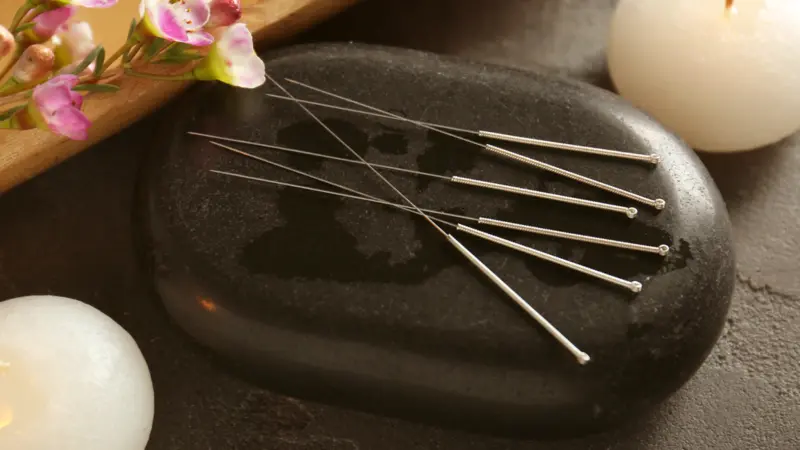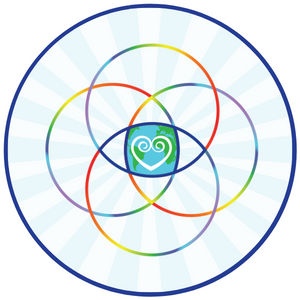

Integrative Health and Wellness

Integrative Health and Wellness
Acupuncture for the Therapeutic Treatment of Cancer Pain
Pain in cancer patients and survivors is very common and can be caused by the cancer itself invading organs, soft tissues (nerves and blood vessels) or bones, or the treatments for cancer, which include chemotherapy, radiotherapy, hormones, and surgery. Multiple sites may be affected and multiple mechanisms are at play including inflammatory, neuropathic, ischemic, and compression pain. Bone pain due to metastatic cancer is often particularly severe, unremitting, and poorly controlled. Patients with bone pain need high doses of analgesic drugs, which are often associated with undesirable side-effects.1 Moderate to severe pain is experienced by 40% of individuals with early or intermediate stage cancer and 90% of individuals with advanced cancer. Up to 70% of all patients with cancer pain do not receive adequate pain relief, diminishing their quality of life in terms of both physical and psychological well-being.2
Acupuncture for the Cancer Pain: The Clinical Evidence
A Comparative Literature Review in 2017 found a potentially positive effect of acupuncture in treating cancer pain.3 The review included two systematic reviews, the older of which was unable to draw firm conclusions due to small sample sizes and clinical differences in the patients being treated. The more recent review included 36 trials and over 2200 randomized patients. They found a moderate effect size of acupuncture on cancer-related pain, and concluded that “acupuncture is effective in relieving cancer-related pain, particularly malignancy-related and surgery-induced pain.”4 Although this review did not report on risks arising from treatment with acupuncture, elsewhere studies have indicated that acupuncture is a feasible and safe treatment5,6 and may successfully be used to treat cancer patients for symptom management due to the low risks associated with its use.7
How Acupuncture Treats Cancer Pain: Biological Mechanisms
Acupuncture’s mechanisms for treating cancer pain are thought to be similar to those for treating other painful conditions, whether the pain is categorized as acute or chronic. These mechanisms have been researched extensively for over 60 years, and while there is still much left to learn about acupuncture mechanisms and the human body in general, the neural pathways from acupuncture point stimulation to the spinal cord and then to the deactivation of the pain centers in the brain have been mapped.8,9 Acupuncture has been demonstrated to activate a number of the body’s own opioids as well as improve the brain’s sensitivity to opioids.10 A number of other biochemicals involved in pain reduction have been found to be released and regulated by acupuncture stimulation, including ATP, adenosine, GABA, and substance P.11 Acupuncture has also been demonstrated to reduce activity in the parts of the brain associated with the perception of pain and increase activity in brain areas associated with improved self-regulation.12
The Mainstream Approach to Treating Cancer Pain
Analgesic drugs are the mainstay of pain relief, the main classes of which are non-steroidal anti-inflammatory drugs (NSAIDs), acetaminophen, and opioids. These drugs are used singly or together according to the severity of pain.13 The most widely used guidelines for physicians about how best to provide pain management to their patients are those developed by the World Health Organization (WHO).
Opioids
For moderate to severe cancer pain, opioids are the main choice. Despite wide-spread usage and recommendations from international guidelines, there remains a lack of high-quality studies to support their use. According to a recent review, “systematic reviews of the effectiveness of opioids in non-cancer pain show a paucity of literature of high quality RCTs with long-term follow-up and even appropriately performed non-randomized studies. Further, the literature on effectiveness of opioid therapy is even less in cancer survivors with chronic pain.”14 A recent Cochrane review providing an overview of Cochrane reviews for opioids for cancer pain highlighted the lack of data and commented that: “The amount and quality of evidence around the use of opioids for treating cancer pain is disappointingly low,” and that “most people will experience adverse events.’15
Regarding the use of opioids to treat cancer pain in children and adolescents, a 2017 review concluded that “No conclusions can be drawn about efficacy or harm in the use of opioids to treat cancer-related pain in children and adolescents. As a result, there is no RCT evidence to support or refute the use of opioids to treat cancer-related pain in children and adolescents.’’16
The first and only randomized study to ever evaluate the long-term effectiveness of opioids for pain relief found that those taking opioids were actually in more pain at 12-months compared to those who were on non-opioid pain relief.17
“The amount and quality of evidence around the use of opioids for treating cancer pain is disappointingly low.” (Wiffen et al, Cochrane Database of Systematic Reviews, 2017)18
NSAIDS and Acetaminophen
For mild to moderate pain, NSAIDs and Acetaminophen (also known as non-opioids) are primary. Regarding side effects and safety, concerns about taking such painkillers have increased in recent years.
A 2017 review of the safety of NSAIDs, which included 440,000 patients, found an increased risk of heart attack when using any NSAIDs at any dose, even for as little as one week.19 NSAIDs have also been shown to increase the risk of gastrointestinal bleeding,20 a serious and potentially fatal complication, as well as acute kidney injury.21 A 2016 systematic literature review of safety evidence found an increased risk of cardiovascular complications, GI bleeding, kidney toxicity, and death from taking Tylenol or Paracetamol.22
Regarding the analgesic effectiveness of non-opioids, recent evidence from reviews is generally scarce. A 2017 Cochrane systematic review of Paracetamol for cancer pain in adults and children concluded, “There is no high-quality evidence to support or refute the use of paracetamol alone or in combination with opioids for the first two steps of the three-step WHO cancer pain ladder.”23
A 2017 systematic review of NSAIDs for cancer pain in adults, which included adverse events associated with their use, concluded that there is no high-quality evidence to prove or disprove that NSAIDs are useful in treating people with cancer pain. Very low-quality evidence shows that some adults with moderate or severe cancer pain have their pain much reduced within one or two weeks of NSAID use.24 A similar review of evidence for treating cancer pain in children and adolescents (birth to 17 years) concluded that due to a lack of information (and the overall quality therefore being very low) there was no evidence to support or refute the use of NSAIDs to treat cancer pain in children and adolescents.25
Other Pharmacological and Non-Pharmacological Options for Treating Cancer Pain
Other treatments for cancer pain include anti-depressants, anti-histamines, anti-anxiety medications, stimulants and amphetamines, anti-convulsants, steroids, and complementary and alternative therapies;26 these treatments are subject to a lack of clinical data. Compared to pharmaceuticals, which are associated with adverse effects and suffer from a lack of clinical evidence of effectiveness to support their use, acupuncture is a safe, cost-effective, and evidence-based treatment for cancer pain.
“There is no high-quality evidence to support or refute the use of NSAIDs alone or in combination with opioids for the three steps of the three-step WHO cancer pain ladder.” (Derry et al 2017, Cochrane Systematic Review)27
REFERENCES
1. Chiu HY, Hsieh YJ, Tsai PS. Systematic review and meta-analysis of acupuncture to reduce cancer-related pain. Eur J Cancer Care. February 2016:n/a–n/a. doi:10.1111/ecc.12457.
2. Paley, C.A., Johnson, M.I., Tashani, O.A. and Bagnall, A.M., 2011. Acupuncture for cancer pain in adults. Cochrane Database Syst Rev, 1(10).
3. McDonald JL, Janz S. The Acupuncture Evidence Project. February 2017:1-81. http://www.acupuncture.org.au/OURSERVICES/Publications/ AcupunctureEvidenceProject.aspx.
4. Chiu HY, Hsieh YJ, Tsai PS. Systematic review and meta-analysis of acupuncture to reduce cancer-related pain. Eur J Cancer Care. February 2016:n/a–n/a. doi:10.1111/ecc.12457.
5. Feeney C, Bruns E, LeCompte G, Forati A, Chen T, Matecki A. Acupuncture for Pain and Nausea in the Intensive Care Unit: A Feasibility Study in a Public Safety Net Hospital. The Journal of Alternative and Complementary Medicine. April 2017:acm.2016.0323. doi:10.1089/ acm.2016.0323.
6. Lao L. Acupuncture practice, past and present: is it safe and effective? J Soc Integr Oncol. 2006;4(1):13-15.
7. Lu W, Dean-Clower E, Doherty-Gilman A, Rosenthal DS. The value of acupuncture in cancer care. Hematol Oncol Clin North Am. 2008;22(4):631–48–viii. doi:10.1016/j.hoc.2008.04.005.
8. Longhurst J, Chee-Yee S, Li P. Defining Acupuncture’s Place in Western Medicine. Scientia. February 2017:1-5.
9. Zhang Z-J, Wang X-M, McAlonan GM. Neural Acupuncture Unit: A New Concept for Interpreting Effects and Mechanisms of Acupuncture. Evidence-Based Complementary and Alternative Medicine. 2012;2012(3):1-23. doi:10.1016/j. brainresbull.2007.08.003.
10. Harris RE, Clauw DJ, Scott DJ, McLean SA, Gracely RH, Zubieta J-K. Decreased central mu-opioid receptor availability in fibromyalgia. J Neurosci. 2007;27(37):10000-10006. doi:10.1523/JNEUROSCI.2849-07.2007.
11. Zhao Z-Q. Neural mechanism underlying acupuncture analgesia. Progress in Neurobiology. 2008;85(4):355-375. doi:10.1016/j.pneurobio.2008.05.004.
12. He T, Zhu W, Du S-Q, et al. Autonomic Neuroscience: Basic and Clinical. Autonomic Neuroscience: Basic and Clinical. 2015;190(C):1-9. doi:10.1016/j.autneu.2015.03.006.
13. American Cancer Society. Non-opioids and Other Drugs Used to Treat Cancer Pain. cancer.org. https://www.cancer.org/treatment/treatments-and-side-effects/physical-side-effects/pain/ non-opioids-and-other-drugs-to-treat-cancer-pain.html. Published February 15, 2017. Accessed May 22, 2018.


 By
By






